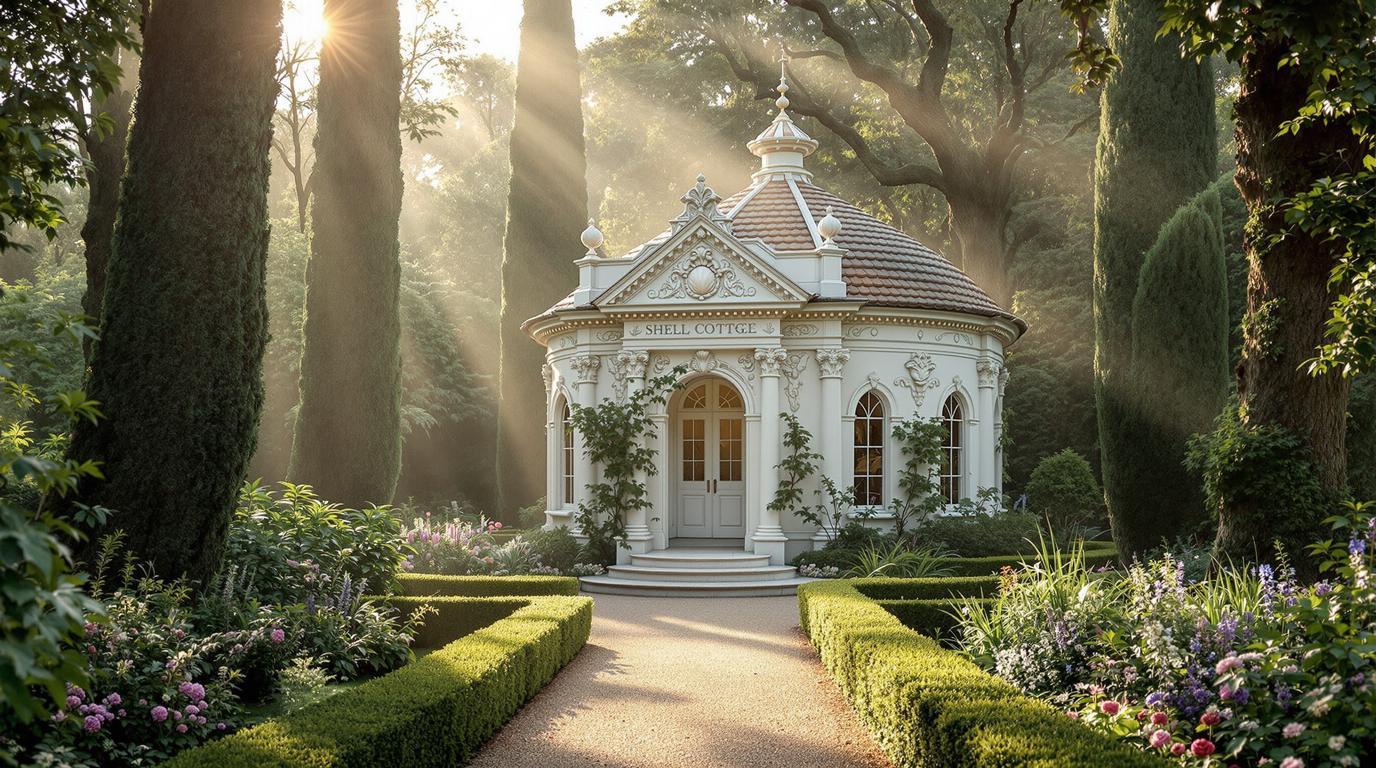I stepped through a veil of history as my footsteps crunched along the winding gravel path, where queens once strolled and royalty sought refuge from court politics. The Jardin anglais du Château de Rambouillet isn’t merely another French garden—it’s an intimate royal secret hiding in plain sight, just 45 minutes from Paris yet worlds away from the selfie sticks and tour groups cramming Versailles.
Where Marie Antoinette played shepherdess beneath centuries-old cedars
Created in the 1770s under the Duke of Penthièvre, these 150 hectares of carefully orchestrated “wilderness” represent the Enlightenment’s fascination with idealized nature. Unlike the mathematical precision of typical French formal gardens, Rambouillet’s English garden embraces meandering paths that reveal surprises around every bend.
“The garden was designed as theater,” explains Martine Dubois, head gardener for 23 years. “Each turn offers a new scene, a new emotion. That’s why it feels so much larger than it actually is.”
Presidents still entertain dignitaries in the 14th-century château, continuing a tradition that has seen this estate serve as a royal playground, revolutionary acquisition, and ultimately, a presidential retreat. Yet surprisingly few visitors venture beyond Paris to experience its sublime combination of history and horticultural artistry.
Three extraordinary follies hidden within a royal playground
The shell-encrusted cottage that outshines the château
The unassuming exterior of the Chaumière aux Coquillages (Shell Cottage) offers no hint of the extravagance within. Pushing open the wooden door, I gasped audibly at walls completely encrusted with thousands of seashells, mother-of-pearl fragments, and coral arranged in intricate patterns. Built for the Princess de Lamballe in 1779, this rustic exterior concealing opulent interiors perfectly embodies the period’s fascination with contrasts.
Most remarkable is the salon’s domed ceiling adorned with shell-work depicting mythological scenes. Unlike anything I’ve encountered in dozens of European palaces, it feels like stepping inside a bejeweled music box.
The neoclassical dairy fit for a queen
Marie Antoinette’s Laiterie de la Reine stands as perhaps the world’s most elegant milking parlor. Surrounded by ancient cedars, this gleaming marble temple celebrates rural simplicity through aristocratic extravagance. Inside, pristine white marble walls frame a central fountain where the queen would ladle fresh milk into Sèvres porcelain cups for her guests.
Visit on weekday mornings to possibly have this architectural gem entirely to yourself—a stark contrast to the crowds at similar Parisian art treasures that require strategic timing to enjoy in solitude.
Savoring slow-cooked rabbit alongside presidential chefs
In the village of Rambouillet, Le Relais du Château serves what might be the region’s most authentic representation of traditional Île-de-France cuisine. Their lapin à la moutarde—rabbit slowly braised in white wine, cream, and local grain mustard—has remained unchanged on their menu for four decades.
“We’ve served three French presidents this exact dish,” confides owner Philippe Menut. “It’s the same recipe my grandmother used when this was just our family home.” Request a table in the glass-enclosed garden room, where antique copper cookware hangs from wooden beams and seasonal produce from the restaurant’s kitchen garden influences daily specials.
Navigating royal grounds without the royal crowds
Timing your visit strategically
Arrive before 10 am on weekdays to experience the gardens in near solitude. The château itself receives just a fraction of Versailles’ visitors, making even peak season manageable. For photographers, the golden hour light filtering through ancient trees creates ethereal conditions, particularly in autumn when the canals reflect fiery foliage.
Accommodation insights
Skip characterless chain hotels for historic accommodations like La Bergerie des Houches, a meticulously restored farmhouse offering just four rooms on the domain’s edge. For longer stays, the medieval village of Montfort-l’Amaury provides an atmospheric base just 20 minutes away.
Finding unexpected peace in a presidential retreat
As afternoon light streamed through ancient trees, casting dappled shadows across manicured lawns, I found myself alone beside the grand canal. No tour groups, no vendors, no crowds—just centuries of French history breathing quietly through landscapes that have witnessed revolutions yet remained remarkably unchanged. In our hyperconnected world, perhaps such moments of historical solitude are the true luxury.
